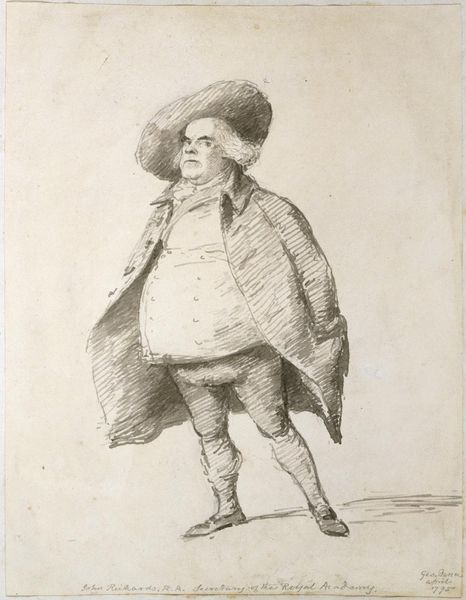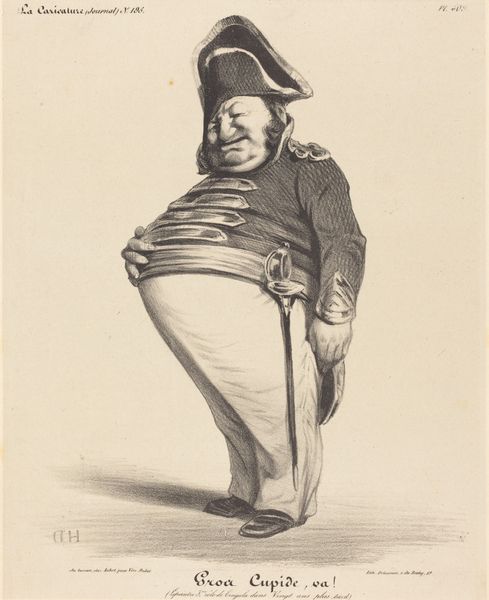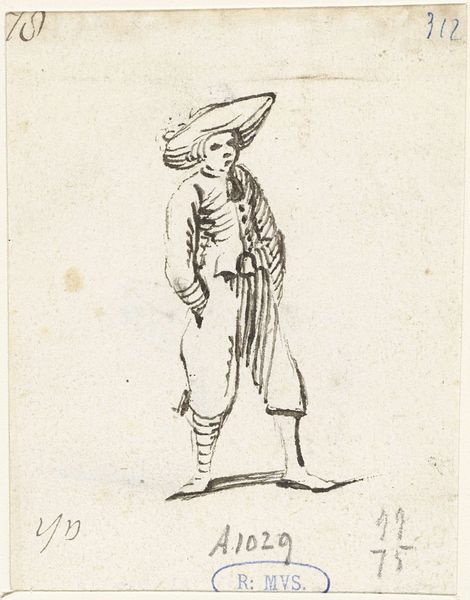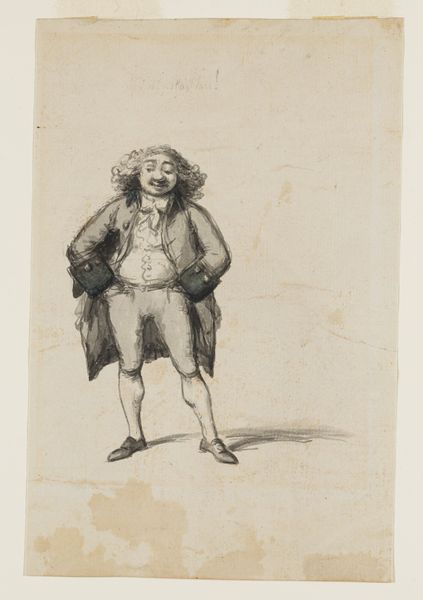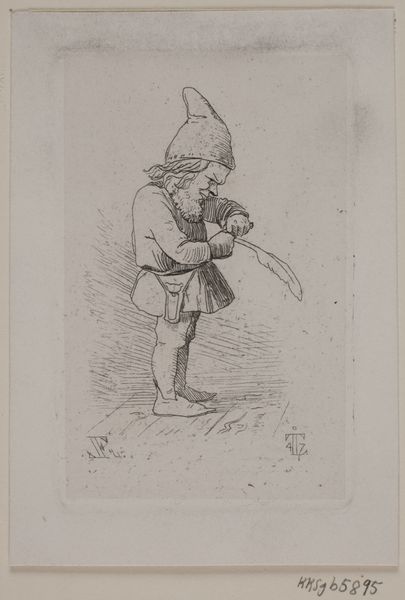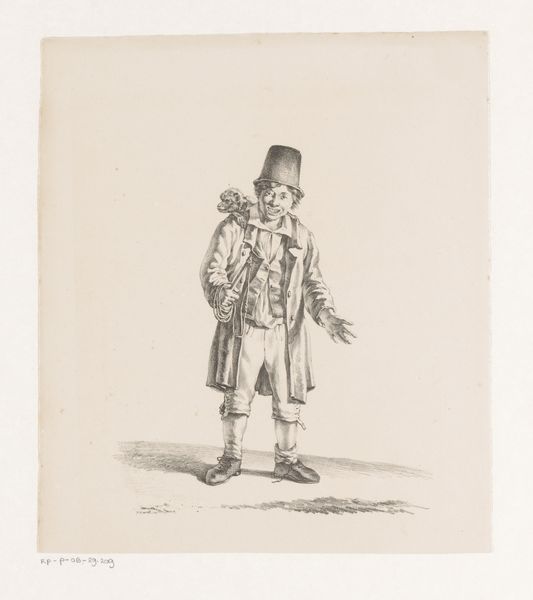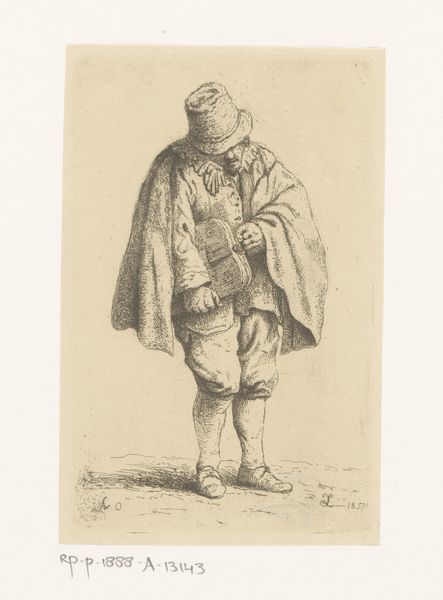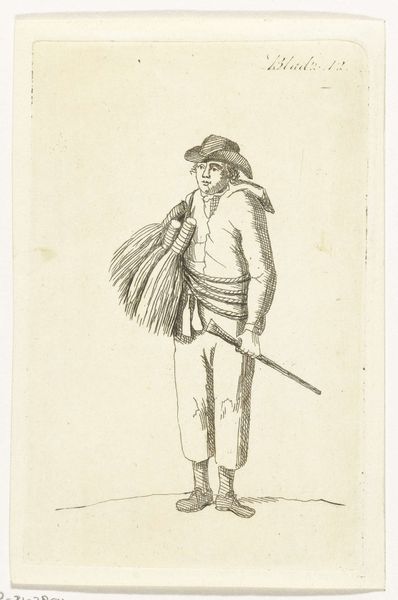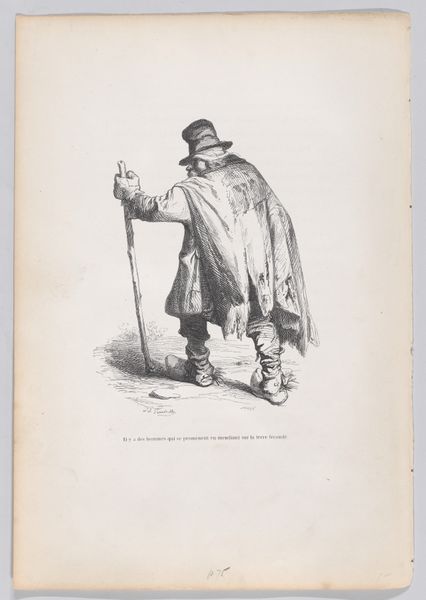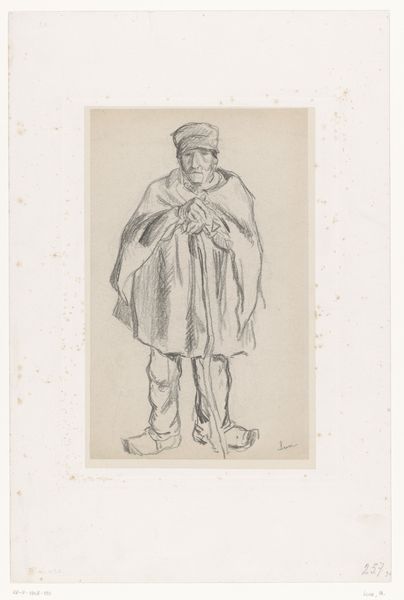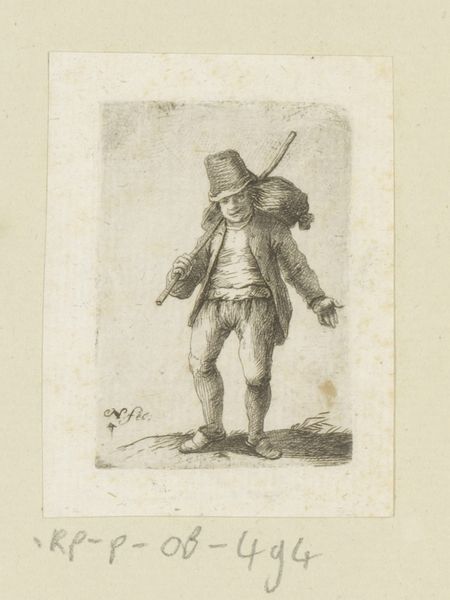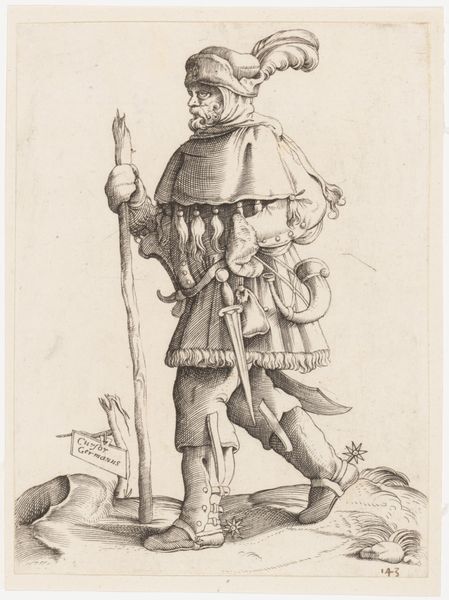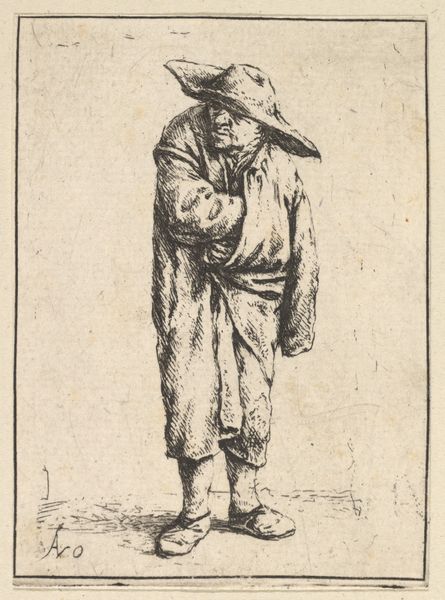
print, engraving
#
portrait
#
neoclacissism
# print
#
figuration
#
form
#
line
#
history-painting
#
engraving
Dimensions: 266 mm (height) x 133 mm (width) (plademaal)
Curator: So, what jumps out at you initially about "Brudgommen"? This engraving by M.W. Schmith, likely created between 1796 and 1802, offers quite a singular vision, wouldn’t you agree? Editor: Utterly singular! It’s…bulbous, strangely innocent, yet bordering on the grotesque. The costume swallows the figure, yet the delicate lines of the engraving lend it a bizarre formality. Curator: Yes, exactly! It’s this tension that captivates me. On the one hand, there’s a stark simplicity, a focus on form reminiscent of Neoclassical ideals; look at the clarity of the lines, the controlled shading. Yet, the subject itself is so odd, so… otherworldly. It feels like a character from a dark fairy tale. Editor: Precisely. The artwork really pulls at so many threads: The grotesque figure becomes a kind of historical body, a commentary perhaps on the exaggerated styles of the period or the construction of identity. Are we seeing a critique of gender roles within the societal expectations of marriage at this moment? What does being a groom *mean*? Curator: That’s a fascinating point. And considering its time, the late 18th/early 19th century, when societal expectations were so rigidly defined…it suggests something subversive, don't you think? The figure is entirely encased. Almost restricted, robbed from humanity. Marriage, in this moment, feels claustrophobic. The "groom" here isn't expressing himself; he's an entity to be looked at, judged, weighed for value, maybe even… eaten! Metaphorically, of course. Editor: Of course! Yet, that very exaggeration serves to critique the structures of power at play, how individuals, particularly men, are often required to perform and conform to strict social roles and… wear a mask! It reminds us that art can simultaneously reflect and question the status quo, right? Curator: It does indeed! “Brudgommen” stays with you precisely because it invites so many interpretations. You begin with the visual impact, the peculiarity of the figure, and then it starts spiraling outward, into questions about history, society, identity, and of course, what we actually see when we look at art. Editor: It reminds me that there are always multiple ways of seeing. Art isn't about definitive answers, but more about prompting ongoing dialogues, both internal and external. Curator: Well said. Perhaps that's why, over two centuries later, this image can still spark curiosity and thought.
Comments
No comments
Be the first to comment and join the conversation on the ultimate creative platform.
